London’s fresh-faced gallery in the picture, again
The British capital’s National Portrait Gallery has reopened after a three-year, $80m makeover.
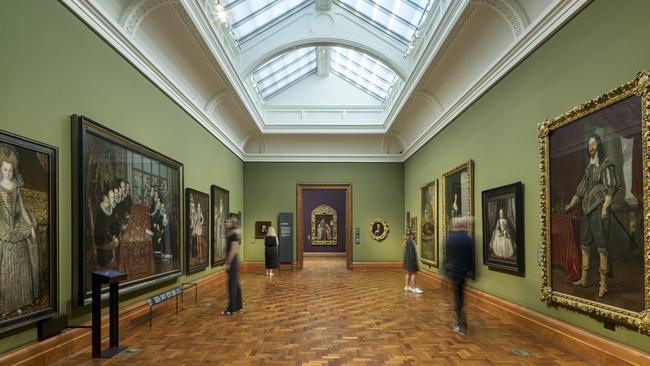
For all the hype of London’s revamped National Portrait Gallery, reopened in June after a three-year, $80m renovation, it is Shakespeare I’ve come to see. Not “Tom Shakespeare, Intellect with Wheels”, Lucy Jones’s exuberant portrait of the English bioethicist in his wheelchair. His is one of many fresh faces – among them Anna Wintour, Jeanette Winterson and activist footballer Marcus Rashford – to be found in the new ground-floor space called History Makers Now. I’m here for the original Shakespeare, William, whose image was the first to grace the gallery’s walls when it was founded in 1856. Somehow I missed it on a previous visit.
The so-called Chandos Portrait is one of just a handful of Shakespeare likenesses in existence. Some argue it’s the only true one, so it’s a must-see among the thousands of prominent Britons on display. It depicts England’s literary lion with wispy beard, a gold ring in his left ear, loose white collar with trailing laces and dark hair cascading from a high, balding forehead. All the expression lies in his eyes and moustachioed mouth, described by one dubious 19th-century critic as “somewhat lubricious” and unbecoming of Britain’s greatest literary hero. To me he looks suitably bohemian, thoughtful but with a hint of mischief in his large oval eyes, their light undimmed over four centuries since they were captured by an unknown artist.
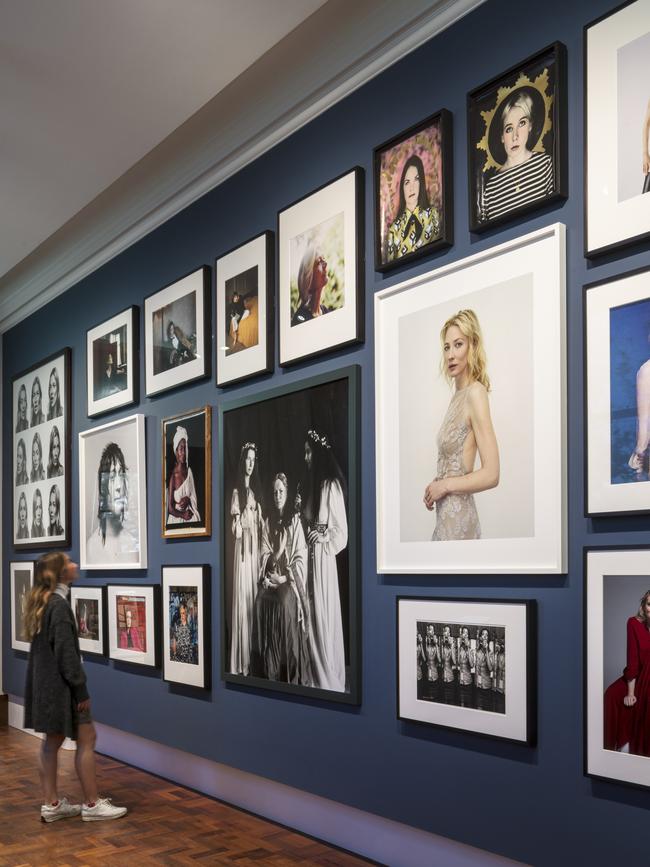
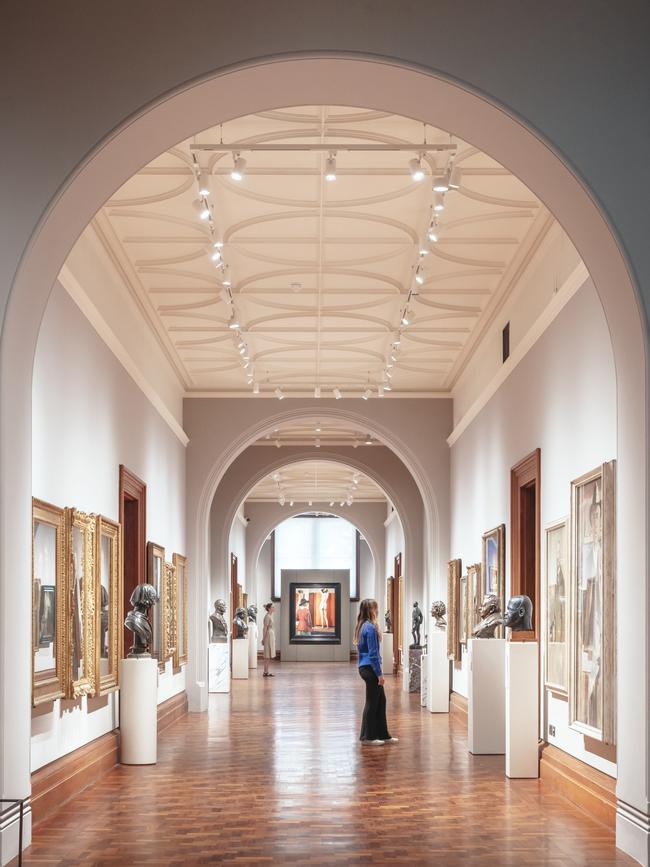
It’s ageless and compelling, like the best portraits. And yet the National Portrait Gallery feels like the perfect museum for today’s image-obsessed society; this selfie generation. It’s literally wall-to-wall celebrities, from the Middle Ages to the modern day.
Since moving to its current site on Charing Cross Rd in 1896, the gallery has been constantly expanded and modified but never so comprehensively reimagined as this. The makeover restores the glory of the original Victorian palazzo, uncovering windows and skylights boarded up since World War II, recycling old offices into the Weston Wing of contemporary portraits, and adding about 20 per cent more public space so that, for example, the gallery’s 80,000-strong print archive finally has its own home (though less than 1 per cent of it is on show).
The museum, previously accessed via a narrow side door, now has a proper entrance on Ross Place fitted with three bronze portals. Created by the artist Tracey Emin, each 4m-high door features 15 panels etched with female faces depicting “every woman”, including two sporting pandemic masks, marking this time in history.
The concept was a nod to Lorenzo Ghiberti’s bronzes in Florence, the Renaissance masterpiece known as the Gates of Paradise, says Sarah Howgate, senior curator of contemporary collections. But it is also a deliberate counterbalance to the chiselled busts of illustrious figures – all male – in the roundels lining the Portland stone facade.
“It’s an amazing achievement,” Howgate says of Emin’s monumental doors. “They’re very contemporary but the medium is very historic. And they’re going to be here for hundreds of years.”
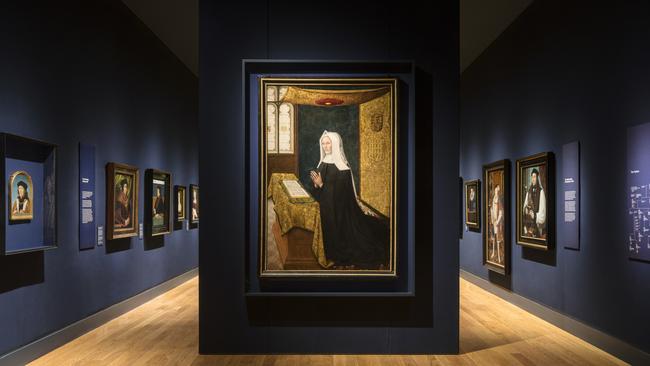
The entire gallery has been rehung to showcase about 1100 artworks, a third more than previously, but remains chronological. An escalator propels visitors straight to the Hilary Mantel-land of Tudor England on the top (third) floor, where the noble likenesses of kings, queens and courtiers stare down from the walls. It’s here you’ll also find the earliest known self-portrait made in England, a 1554 oil of Gerlach Flicke and Henry Strangwish painted by Flicke when the pair were cellmates in prison.
But at the core of the redevelopment was a desire, in the gallery’s words, to present “an inclusive and dynamic picture of the people who have contributed to the rich history of the United Kingdom”. To that end, women and people from diverse backgrounds now feature far more prominently. “In our post 1900 galleries we now have 48 per cent of sitters on the walls who are women,” explains curator Constantia Nicolaides, who helped spearhead the NPG’s Women in Portraiture project. Across the whole exhibition more than a third of portraits are female, ranging from a mezzotint of 18th-century murderer Mary Blandy to a luminous Cate Blanchett by Dutch photographer Rineke Dijkstra.
The contemporary collection’s new permanent home on the first floor includes arresting commissions such as Iranian artist Shirin Neshat’s portrait of Nobel Peace Prize laureate Malala Yousafzai, her features pixelated with the words of a Pashto poem about an Afghan heroine also called Malala.
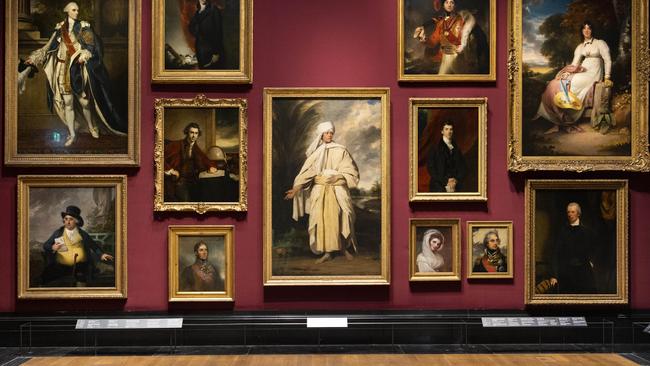
Some works challenge or play with our perceptions of what a portrait is or can be. Pauline Boty’s self-portrait from the late 1950s is the gallery’s only stained-glass piece. A 2022 tapestry by Michael Armitage immortalises four dustmen working during Covid lockdowns. And there’s an astonishing profile silhouette of magazine editor Isabella Blow, created by shining a spotlight on a seemingly formless sculpture comprised of 15 stuffed animals (including ravens and a snake) and Blow’s own possessions such as a lipstick and a Manolo Blahnik heel. (The sculpture is, according to the NPG website, “regularly checked for pests”.)
A previously neglected rotunda now houses a fascinating array of life and death masks, from slightly eerie facsimiles of Wordsworth and Blake, the gilded bronze faces of Francis Bacon and Emin, and Marc Quinn’s head-cast made from eight pints of his own refrigerated blood. It’s ghoulishly good stuff.
This is the great joy of the National Portrait Gallery, the way it rewards curiosity with constant surprises. Come for the famous faces daubed in oils, by all means, but prepare to be equally moved by the breadth and creativity of contemporary portraiture, which the revitalised gallery elevates and celebrates with gusto.
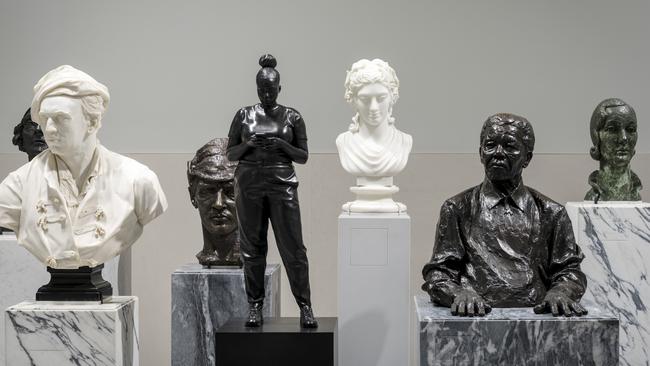
IN THE KNOW
The National Portrait Gallery reopened with two special exhibitions: a retrospective of the 20th century photographer Madame Yevonde (until October 15) and Eyes of the Storm, Sir Paul McCartney’s images documenting The Beatles’ rise to super-stardom in 1963-64 (until October 1). Free entry (except special exhibitions).
Australian expat and London cafe queen Prue Freeman is behind the gallery’s new cafe, Audrey Green, a stylish brunch, lunch and afternoon-tea spot complete with lamingtons, and basement bar Larry’s, which stays open ’til midnight at weekends. The gallery’s much-loved rooftop restaurant reopened as The Portrait in July, with star chef Richard Corrigan serving British and Irish ingredients (prawn cocktail, glazed Lancashire duck) and views over Trafalgar Square and the London skyline.

To join the conversation, please log in. Don't have an account? Register
Join the conversation, you are commenting as Logout